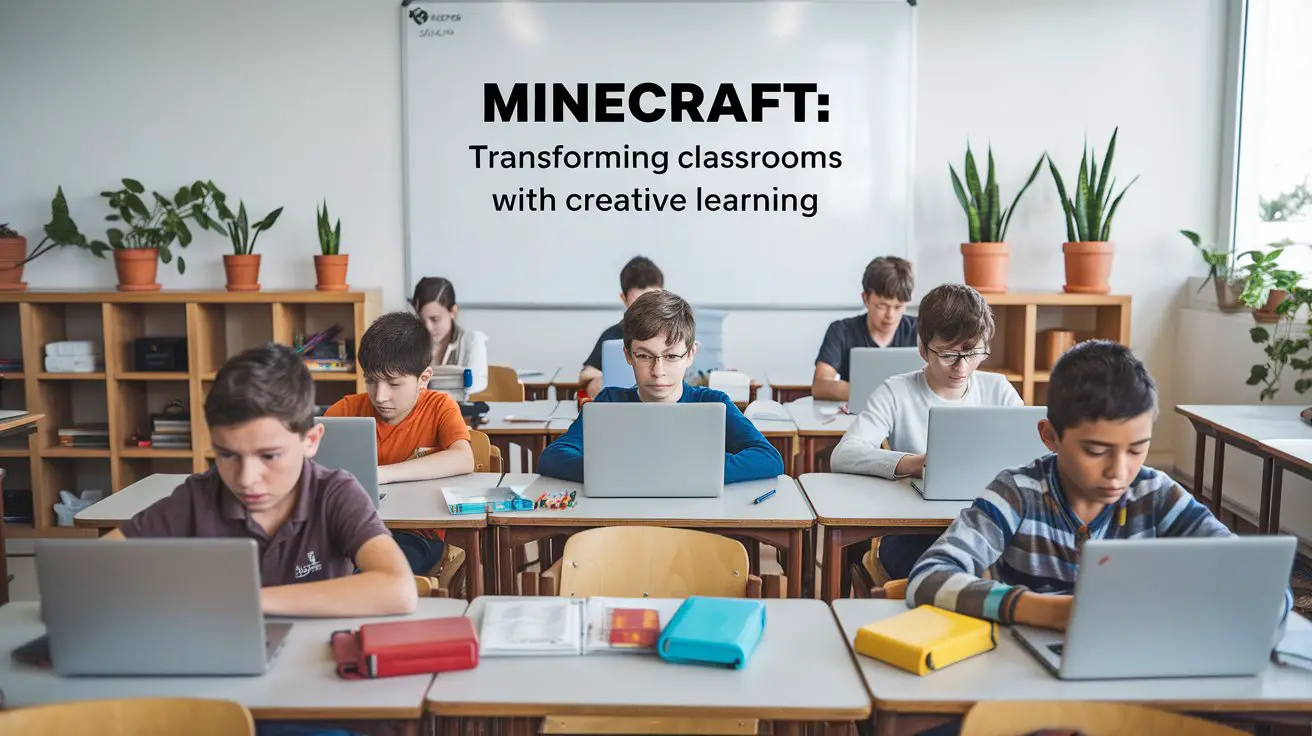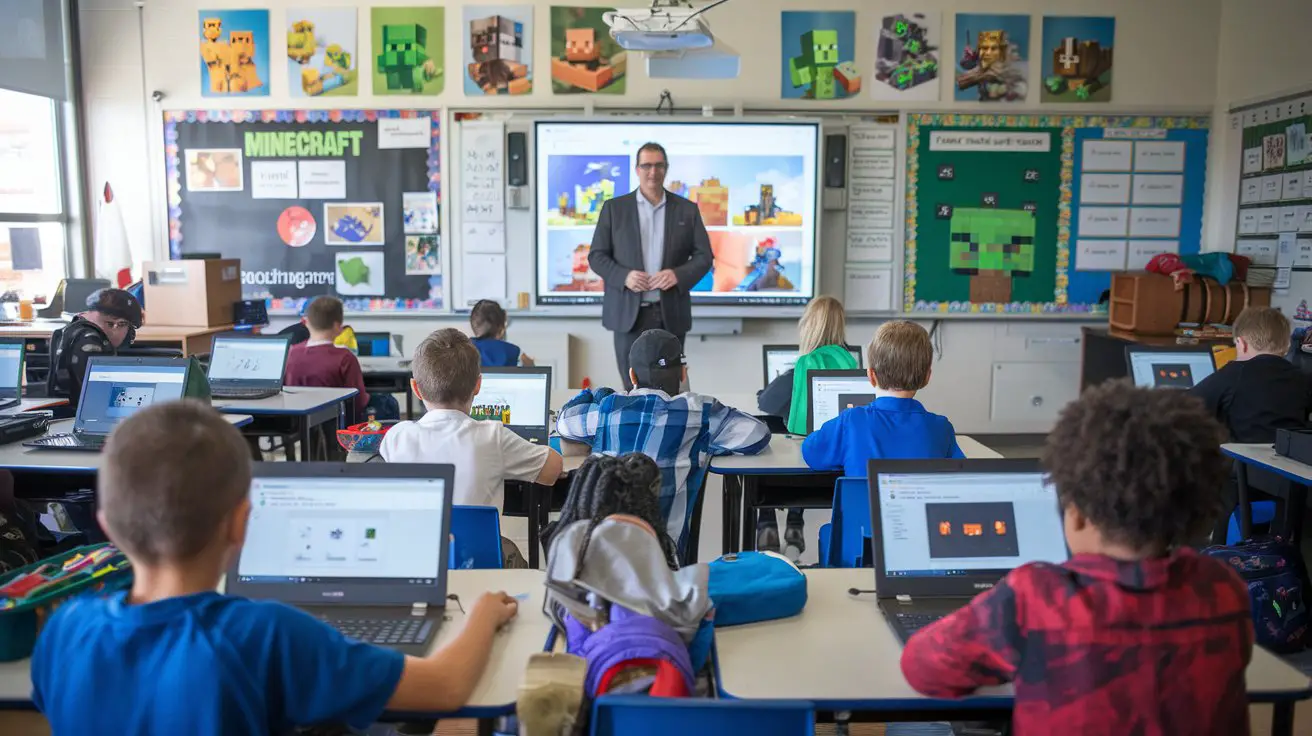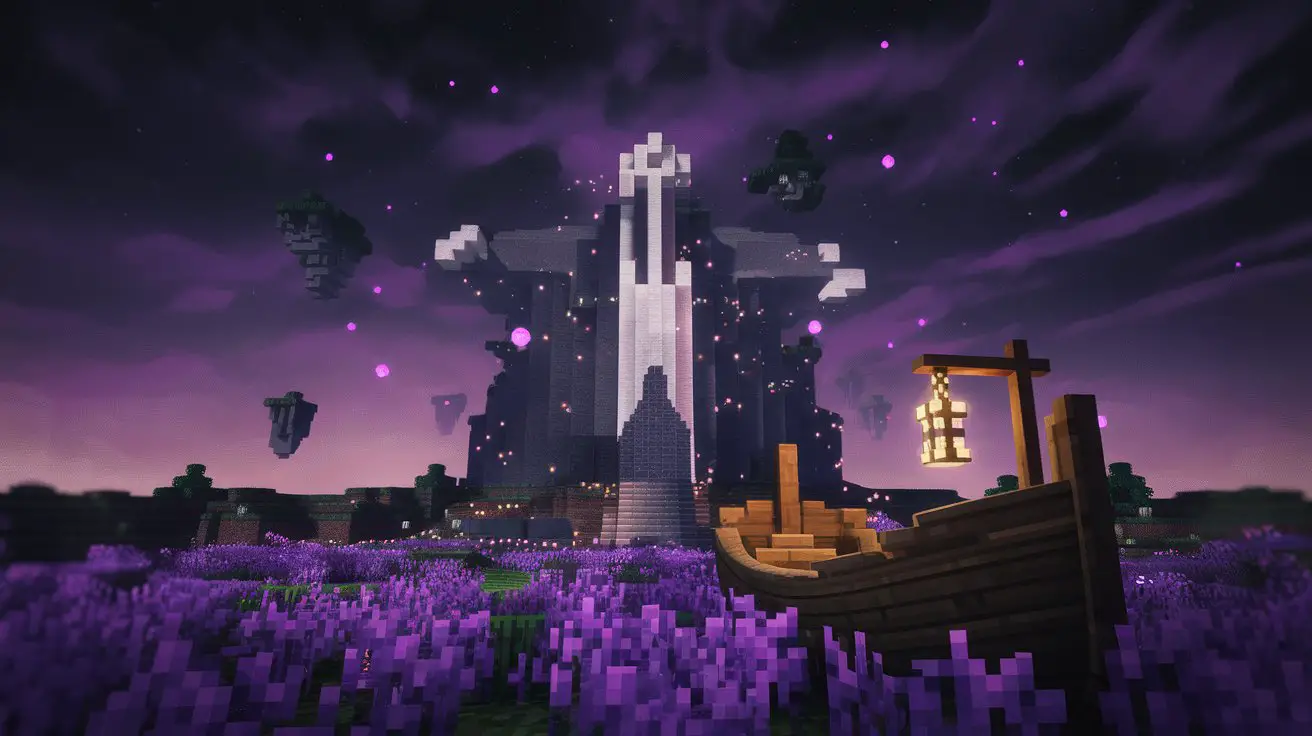Introduction:
Minecraft has evolved from a popular game into a powerful educational tool with the launch of Minecraft: Education Edition. This version of the game is specifically designed to be used in classrooms and at home to enhance learning. It encourages creativity, collaboration, and problem-solving among students while making learning fun and interactive. In this article, we’ll explore how Minecraft Education is revolutionizing education, the key benefits it offers, and how educators and parents can effectively use it to enrich the learning experience.
1. What is Minecraft Education?
Minecraft: Education Edition is an educational version of the popular video game Minecraft, designed for classroom use. Unlike the traditional version of Minecraft, the Education Edition includes features that support teaching and learning, such as classroom mode, coding tools, and lesson plans. It’s a versatile platform that can be used across a range of subjects, from history and geography to mathematics and computer science.

2. The Benefits of Using Minecraft in Education
Using Minecraft in education offers numerous benefits that cater to various learning styles and age groups. Below are some of the key advantages:
- Engagement: Minecraft’s interactive and immersive environment keeps students engaged and motivated to learn. It transforms traditional lessons into dynamic experiences.
- Creativity: Students can design and build their own worlds, which fosters creativity and imagination. They can also experiment with different structures, materials, and designs, encouraging innovative thinking.
- Collaboration: Minecraft promotes teamwork, as students often work together on projects, sharing ideas and solving problems collectively.
- Problem-Solving: The game presents challenges that require critical thinking and strategic planning, helping students develop problem-solving skills.
3. How Minecraft Education Supports Different Subjects
Minecraft: Education Edition is versatile and can be integrated into a wide range of subjects. Here’s how it supports different areas of the curriculum:
- Mathematics: Students can learn about geometry by building 3D shapes, understand volume and area by constructing buildings, and even practice basic arithmetic through in-game challenges.
- History: Teachers can recreate historical events or ancient civilizations in Minecraft, allowing students to explore and interact with history in a more engaging way.
- Geography: Minecraft’s terrain generation can be used to teach about different biomes, ecosystems, and geographical features. Students can also create maps of real-world locations.
- Computer Science: Minecraft includes a coding feature where students can learn the basics of programming using block-based coding or JavaScript. This introduces them to the fundamentals of coding in a fun and interactive way.
- Language Arts: Creative writing assignments can be paired with Minecraft projects where students build scenes from their stories or describe their creations in written form.

Minecraft Education
4. Practical Applications for Educators
For educators, Minecraft: Education Edition offers a wealth of resources and tools to help integrate the game into their curriculum. Here’s how teachers can make the most of this platform:
- Lesson Plans: The game provides access to hundreds of ready-made lesson plans that align with different educational standards. These plans cover various subjects and are designed to be easily implemented in the classroom.
- Classroom Mode: This feature allows teachers to manage their classroom within the game. They can teleport students, grant resources, and monitor student activity to ensure that everyone stays on task.
- Assessment Tools: Teachers can use in-game assessments to track student progress and understanding. Minecraft Education offers features like quizzes and challenges that provide immediate feedback.
5. Real-World Success Stories
Several schools around the world have successfully integrated Minecraft: Education Edition into their curriculum. For example, a school in the United States used the game to teach students about ancient Egyptian architecture by having them build replicas of pyramids and temples. In another case, a school in the UK used Minecraft to simulate the effects of natural disasters, helping students understand the impact of earthquakes and tsunamis on communities.
These real-world applications demonstrate the versatility and effectiveness of Minecraft Education in enhancing traditional learning.
6. How to Get Started with Minecraft Education
Getting started with Minecraft: Education Edition is easy, whether you’re an educator or a parent. Here’s a simple guide to help you begin:
- Create an Account: You’ll need to create an account using your school’s credentials or a Microsoft Office 365 account. This gives you access to the Education Edition and its resources.
- Download and Install: Download the Minecraft: Education Edition software on your computer or tablet. It’s compatible with most devices, making it accessible to a wide range of users.
- Explore Lesson Plans: Before diving in, explore the available lesson plans to see how you can integrate Minecraft into your teaching or home learning.
- Start a New World: Create a new world where students can start building and exploring. You can customize the world based on the subject you’re teaching.
7. Tips for Parents Using Minecraft Education at Home
Parents can also use Minecraft: Education Edition as a home learning tool. Here are some tips to ensure your child gets the most out of their Minecraft experience:
- Set Clear Objectives: Define what you want your child to achieve through their Minecraft sessions. Whether it’s improving their math skills or learning about history, having clear goals will keep them focused.
- Monitor Progress: Keep track of what your child is learning and how they’re applying it. Use in-game assessments to gauge their understanding of the material.
- Encourage Creativity: Let your child’s imagination run wild. Encourage them to build and create freely, as this fosters innovation and creative thinking.
8. Addressing Common Concerns
While Minecraft: Education Edition offers many benefits, some parents and educators may have concerns about screen time, in-game distractions, and the balance between gaming and learning. Here’s how to address these concerns:
- Screen Time: Set limits on how long students or children can spend on Minecraft. Integrate breaks and physical activities to ensure a healthy balance.
- Distractions: Use the Classroom Mode or set specific tasks to keep students focused on learning objectives.
- Balance: While Minecraft is educational, it’s essential to balance it with other forms of learning, such as reading, writing, and hands-on activities.

Minecraft Education
9. The Future of Minecraft Education
The future of Minecraft Education looks promising as more schools and educators adopt the platform. With continuous updates and the addition of new features, Minecraft is set to remain a vital tool in modern education. As technology evolves, we can expect even more innovative uses of Minecraft in classrooms, further blurring the line between learning and play.
Conclusion:
Minecraft: Education Edition is more than just a game—it’s a transformative educational tool that engages students in a way that traditional methods often cannot. By incorporating Minecraft into the classroom or home learning environment, educators and parents can unlock a world of creativity, collaboration, and critical thinking. As we move towards a more digital and interactive future, Minecraft Education stands out as a key player in shaping the minds of tomorrow.
By following the tips and strategies outlined in this guide, you can effectively use Minecraft to enhance learning, ensuring that your students or children benefit from this powerful educational tool.